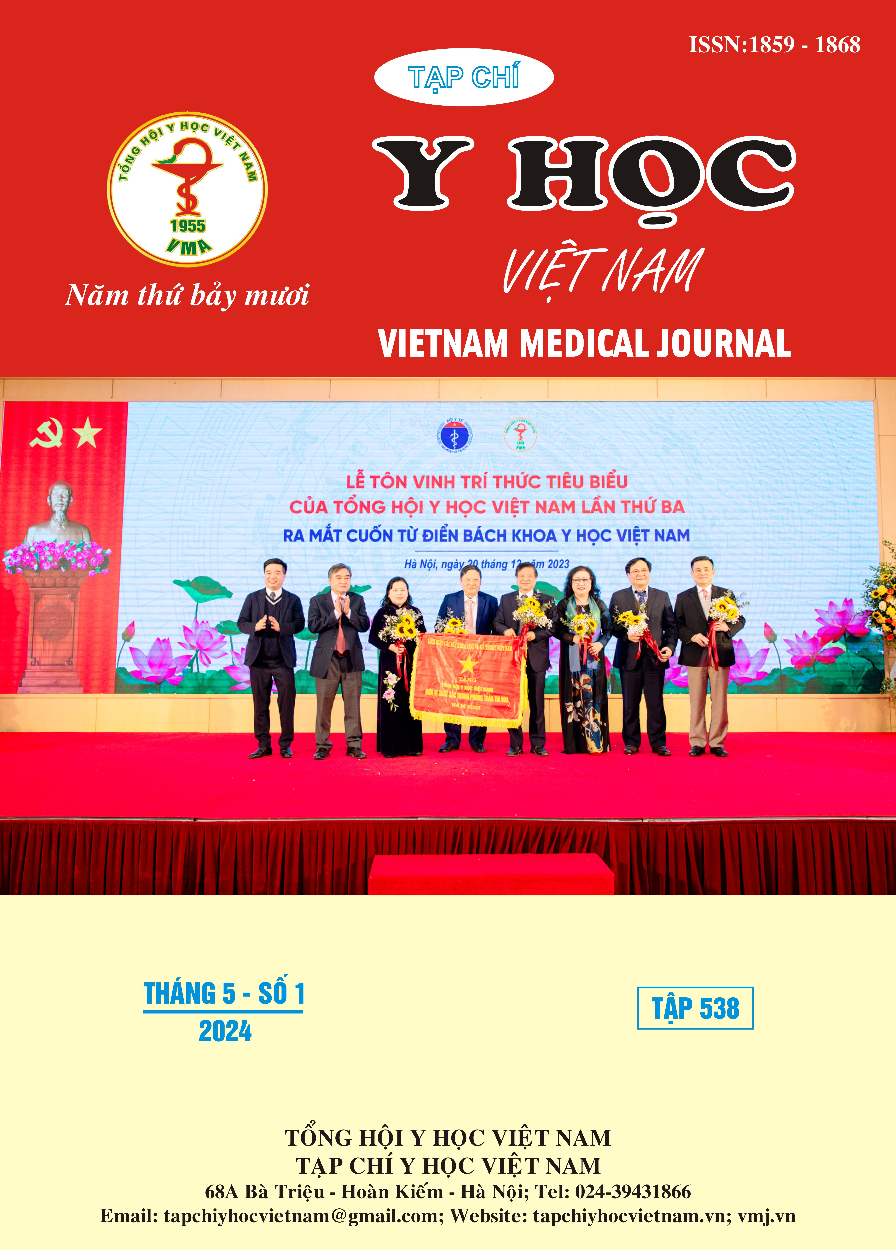EVALUATION OF CENTRAL CORNEAL THICKNESS IN PSEUDOEXFOLIATION SYNDROME AND PSEUDOEXFOLIATION GLAUCOMA
Main Article Content
Abstract
Background: Central corneal thickness (CCT) in patients of pseudoexfoliation syndrome with glaucoma (PEXG) and without glaucoma (PEX) using specular microscopy. Design: Cross-sectional study. Participants and Methods: Eyes were categorized into three groups: (i) 43 normal eyes; (ii) 32 eyes with PEX syndrome without glaucoma; (iii) 35 eyes with PEXG. Central corneal thickness (CCT) were measured using a non contact specular microscope. Results:. Mean CCT in eyes with pseudoexfoliation glaucoma (520.34 ± 29.81 µm) was lower than in the control group (533.86 ± 25.48 µm) with p values = 0.037. Mean CCT in eyes with PEX (527.91 ± 30.7 µm) is thinner than in the control group, but no statistically significant difference. Conclusions: The study shows that corneas are thinner in patients with pseudoexfolaition glaucoma (PEXG) as compared to pseudoexfoliation syndrome without glaucoma (PEX) and controls (CNT).
Article Details
Keywords
pseudoexfoliation syndrome, pseudoexfoliative glaucoma, central corneal thickness, specular microscope.
References
2. Jeng SM, Karger RA, Hodge DO, Burke JP, Johnson DH, Good MS. The risk of glaucoma in pseudoexfoliation syndrome. J Glaucoma. Jan 2007; 16(1): 117-21. doi: 10.1097/01.ijg. 0000243470.13343.8b
3. Konstas AG, Stewart WC, Stroman GA, Sine CS. Clinical presentation and initial treatment patterns in patients with exfoliation glaucoma versus primary open-angle glaucoma. Ophthalmic Surg Lasers. Feb 1997;28(2):111-7.
4. Muir KW, Jin J, Freedman SF. Central corneal thickness and its relationship to intraocular pressure in children. Ophthalmology. Dec 2004; 111(12): 2220-3. doi: 10.1016/j.ophtha. 2004.06.020
5. Gordon MO, Beiser JA, Brandt JD, et al. The Ocular Hypertension Treatment Study: baseline factors that predict the onset of primary open-angle glaucoma. Arch Ophthalmol. Jun 2002; 120(6): 714-20; discussion 829-30. doi:10.1001/ archopht.120.6.714
6. Yu ZY, Wu L, Qu B. Changes in corneal endothelial cell density in patients with primary open-angle glaucoma. World J Clin Cases. Aug 6 2019; 7(15): 1978-1985. doi:10.12998/wjcc.v7. i15.1978
7. Biradavolu Asritha SGF, Sri Roopa Kaveripakam, Abdul Sulaiman Kadher. Comparision of central corneal thickness in pseudoexfoliation syndrome and pseudoexfoliation glaucoma. IP International Journal of Ocular Oncology and Oculoplasty. 2019;5(4):229-232.
8. Nishat Sultana S. Evaluation of Central Corneal Thickness and clinical ocular profile of Patients presenting with Pseudoexfoliation at a tertiary care centre. Indian Journal of Clinical and Experimental Ophthalmology. 2019;5(4):543-551.
9. Ucak T, Karakurt Y, Atum M, Icel E, Gamze Tasli N. Comparison of anterior segment parameters and corneal endothelial changes in patients with pseudoexfoliative glaucoma and pseudoexfoliation syndrome. Annals of Medical Research. 05/25 2021;26(6):1052-1055.
10. Kitsos G, Gartzios C, Asproudis I, Bagli E. Central corneal thickness in subjects with glaucoma and in normal individuals (with or without pseudoexfoliation syndrome). Clin Ophthalmol. 2009; 3:537-42. doi:10.2147/ opth.s6484.


